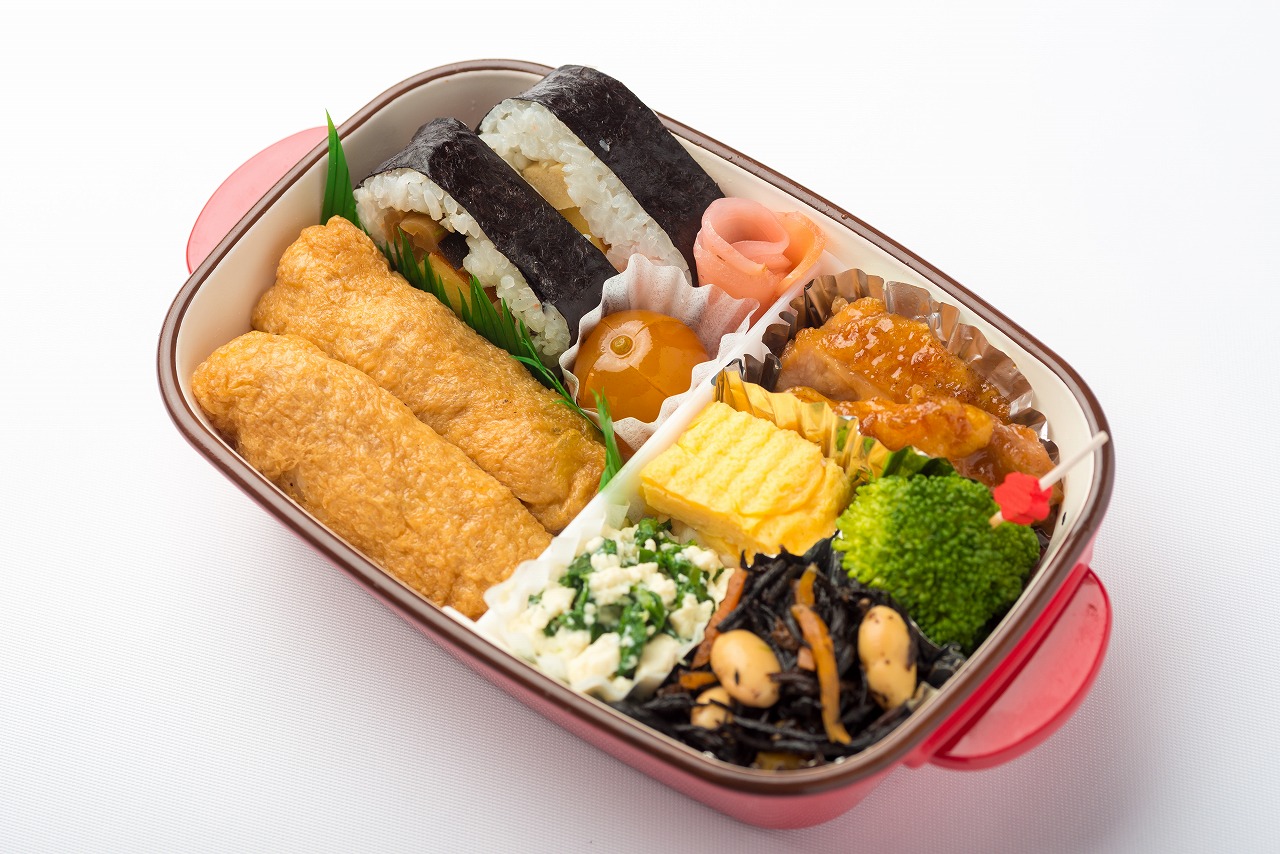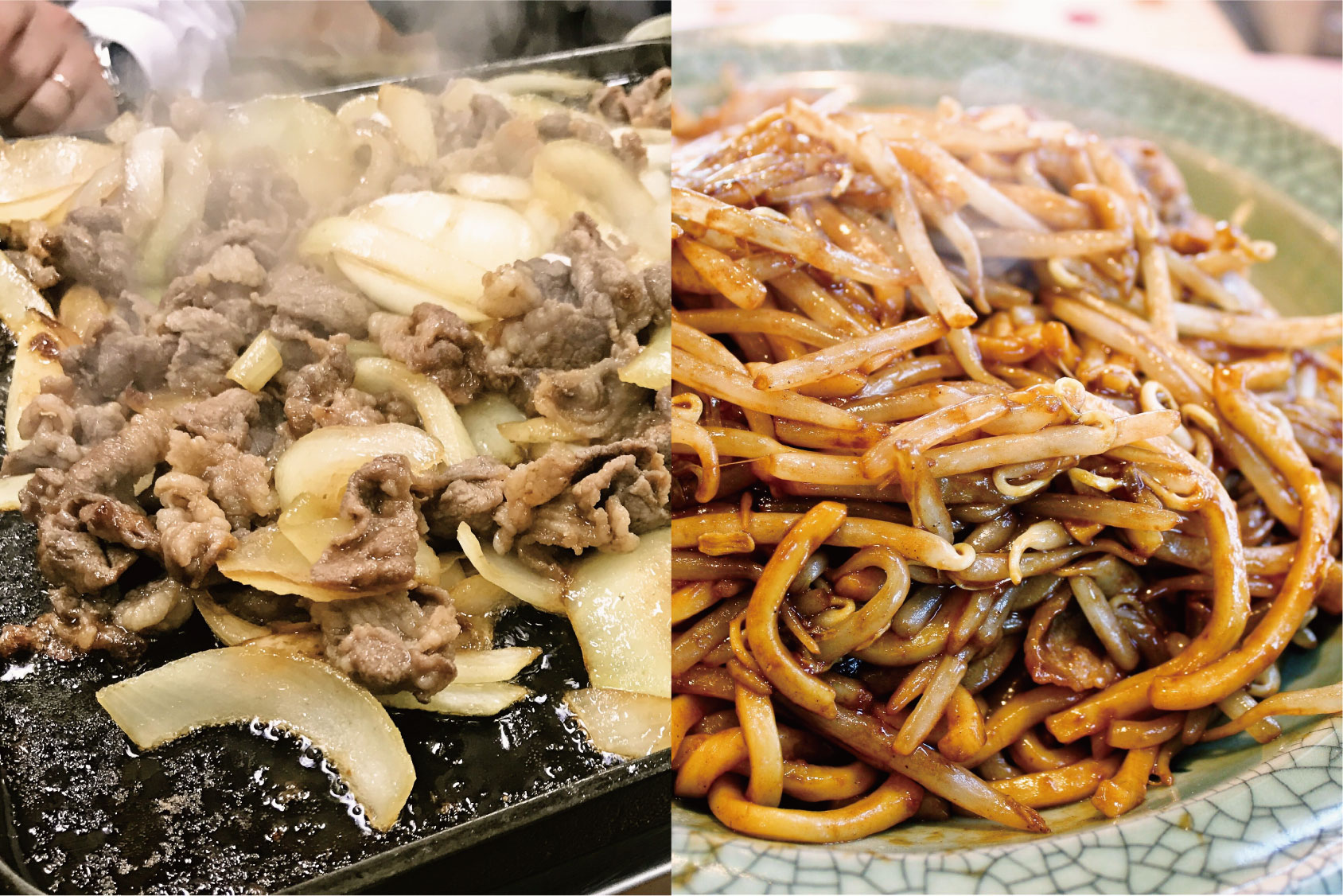News & Blogs
In this blog, we touch on diverse topics about Japanese food cultures, practices together with the culinary secret, TREHA®, and its important role in the Japanese food industry. We hope our blog helps you obtain in-depth knowledge of Japanese cuisine and the science behind it, which is hard to find elsewhere.
Mari, a localization specialist of Team TREHA® wondered what exactly everyday Japanese dishes are. She rediscovered another category of Japanese cuisine, "B-class gourmet" apart from sushi and wagyu beef.
Do you cook sushi at home every day?
I have lived in the United States for over 20 years. When I tell a person that I am Japanese, I receive a pleasant reaction, such as "I love Japanese food (or sushi)." This always makes me happy and brings up a natural smile on my face. Usually, the next question is, "Where is the best Japanese restaurant in town? My favorite is XYZ restaurant. Is it authentic?" The conversation goes on and eventually reaches the question "Do you cook Japanese at home ?" or "Do you eat Japanese food every day?" I always answer "Yes, of course", but there are times I ask myself, "What exactly is everyday Japanese food?"
Sushi, which is becoming the world's favorite, is the easiest menu to think of. Sushi indeed comes in a variety of styles, ranging from casual cooking to an exclusive fine dining experience. It is common for a home chef to prepare fail-proof sushi including futomaki rolls, chirashi (scattered sushi), temaki (hand rolls), and inari sushi (sushi pockets). On the other hand, nigiri sushi prepared by a professionally trained chef is considered a special meal even in a land of sushi, meaning it is not a daily affair. (Click here if you are interested in authentic sushi recipes with TREHA®.)
What about wagyu beef that has become popular in North America? Less fancy wagyu beef cuts can be found at a regular supermarket in Japan starting around 6,000 yen (52 US dollars) per pound, whereas a ribeye steak easily exceeds 10,000 yen per pound (88 US dollars) at the basement of a high-end department store called "depachika." Neither sushi nor wagyu beef is definitely an everyday meal prepared at Japanese households or consumed at restaurants. Then, what is everyday Japanese? I thought of a category called "B-class gourmet".

"B-class gourmet": tastes like an A-class and buys like a B-class
According to Kotobank, "B-class gourmet" is derived from B-movies that are made in a short period of time on a low budget. The term is used for the food itself and an activity or person going after such food. The term has been commonly used since it was introduced in a magazine in the 1980s. In addition to being cheap and quickly prepared, it has to have elements as comfort food that makes us crave for it once in a while. In that sense, gyoza dumplings, ramen noodles, okonomiyaki (savory pancake), karaage (fried chicken), edamame beans, and Japanese curry rice, which are staples in Japanese restaurants in North America, can be considered B-class gourmet. B-class gourmet could include home-cooked dishes and local specialties without clear boundaries between them. (Click for the ramen noodles article and the recipe for karaage, Japanese deep-fried chicken, with TREHA®.)
While local specialties use traditional Japanese ingredients, B-class gourmet may use non-traditional Japanese ingredients such as dairy products and seasonings that are introduced from overseas. For that reason, the sky's the limit for the creativity and originality of B-class gourmet. B-class gourmet is better described as fusion cuisine. However, it does not provide any luxurious flares at all. Therefore, to be more precise, it is best to be described as fusion cheap eats or comfort food with a twist.
I am sure you have a special memory of food from a place you visited in the past. If the food is memorable, you probably remember where you had it just like the naive Shogun who was completely fascinated by the saury he tasted in Meguro in the Rakugo title "Maguro no Sanma (Saury in Meguro)" in the previous post. The memory makes you go back to the place to taste the food again. After frequent visits, you might feel attached to the place so much that makes you consider moving there. This special attachment created by food is the reason why B-class gourmet plays an important role to rejuvenate an economically backward community due to its declining population.
The unique B-class gourmet can serve as a marketing tool to attract tourists and new residents who boost the economy. The unique dish often represents the communities' history and interesting facts, which is an additional fun factor about B-class gourmet.
B is for the brand, B-1 Grand Prix

The B-1 Grand Prix is the gourmet festival and competition committed to supporting regional groups working hard to elevate their communities through memorable local specialties. The first event held in 2006 in Hachinohe City, Aomori Prefecture was participated by 10 exhibitors and 17,000 guests. Later on, the B-1 Grand Prix has significantly grown, celebrated by 55 exhibitors and 314,000 guests in 2019. Although the event was initially featuring "B-class gourmet", the executive committee of B-1 Grand Prix, AIB League Association Japan made clear that "B" of the event name stands for "branding for hardworking communities" instead of "B-class gourmet" to respond to the resentment of some exhibitors towards the implication of "B-class" food being "less than perfect". The league has been an advocate of undervalued communities throughout Japan.
"B-class gourmet" dishes, not typical Japanese menu
At this point, you must be very curious about actual B-class gourmet dishes. Thank you for the wait, here are the five winners of the recent B-1 Grand Prix.
2019 Grand Prix Gold: Tsu Gyoza (津ぎょうざ) - Tsu City, Mie Prefecture
Tsu Gyoza dumpling is a local dish developed by nutritionists at the city's Board of Education to properly feed children in the school district. The most distinct feature is its size, which is about 6 inches long, whereas a regular gyoza dumpling is about 3 inches long. Since each gyoza dumpling is hand-wrapped by school kitchen staff, making one oversized gyoza dumpling was more efficient than making multiple regular-sized ones. For the same reason, they are deep-fried rather than pan-fried, which creates an irresistible combination of juicy pork filling and crispy gyoza shell. Tsu Gyoza has been a local favorite since it made the first appearance as a main dish of school lunch around 1985.
2016 Grand Prix Gold: Akashiyaki (明石焼き) - Akashi City, Hyogo Prefecture
Akashiyaki is a ball-shaped local delicacy, which is said to be the origin of takoyaki (octopus balls). The ingredients are egg yolks, flour, wheat starch, and pieces of octopus, which is a common catch in the Akashi area. Since egg yolks are a major ingredient, it is cooked swiftly in a copper pan to avoid burning. The moist, fluffy, and yellowish balls are served with fish and kelp broth for dipping. The dish is interestingly tied to the Japanese jewelry industry about 130 years ago when natural coral was commonly used for hair ornaments (kanzashi) worn by Japanese women. A craftsman visiting Akashi accidentally discovered that artificial coral can be produced from egg whites and niter. He perfected the production method and contributed to the establishment of a new industry in the area until plastic took over its place. The artificial coral required only egg whites. The reminder, egg yolks became a food item with another local specialty, octopus, and evolved to Akashiyaki.
2015 Grand Prix Gold: Katsuura Tantanmen (勝浦タンタンメン) - Katsuura City, Chiba Prefecture
Tantanmen ramen is a Japanese version of Sichuan Dan Dan noodles. Katsuura Tantanmen has been developed for local divers and fishermen to warm their bodies after working in the cold sea. The basic elements are soy-based soup and noodles topped with minced onion, ground pork, and garlic fried in chili oil. This local specialty features a decent amount of sesame oil infused with chili pepper instead of sesame paste, which is a typical ingredient for Tantanmen ramen.

2014 Grand Prix Gold: Towada Bara Yaki (Grilled beef rib meat, 十和田バラ焼き) -Towada City, Aomori Prefecture
This satisfying skillet meal consists of beef rib meat and plenty of onion slices seasoned with sweet soy sauce. The dish was meant to satisfy the construction workers for a US military base built after the Pacific War. The beef rib meat was a cheap and available ingredient compared to red meat, which was a preferred ingredient by the military base back then.
2013 Grand Prix Gold: Namie Yakisoba (なみえ焼きそば)- Namie Town, Futaba District, Fukushima Prefecture
It is said to have emerged about 50 years ago to make construction workers feel full for a long period of time during their work. It features satisfying thick noodles that are about three times as thick as usual, rich sauce with plenty of umami, and only two ingredients, pork and bean sprouts. A dash of finely ground chili peppers complements the dish.

Looking at the past Grand Prix Gold winners, I noticed that there are many variations of yakisoba (stir-fried noodles) and ramen noodles. This is understandable since the noodles can be transformed into delicious meals using fresh and cheap ingredients and any type of proteins or no protein at all. The variation is endless. Above all, it can be prepared quickly. I also noticed that traditional Japanese seasonings, soy sauce, and miso paste are universally used for the B-class gourmet dishes. I underestimated the power of soy and miso turning any food into Japanese. I should mention that fish broth or kelp broth are the secondary frequently used materials for B-class dishes.
When it comes to what I cook at home, one of my specialties is ramen, which happened to fall under the B-class gourmet category. Interestingly, even the expected attributes for B-class gourmet, being cheap, quick-fix comfort food that makes us crave for it once in a while, are matched. For convenience, I use a store-bought ramen kit. All of this happened when I had to deal with excess char siu made out of pork belly, which received complaints of being "too rich" for my family's liking. Since I did not want it to go to waste, I minced the char siu and added it to the soy sauce soup base that came with the ramen kit, which I thought was too plain. It was well-received. Then, I added another twist using fish broth made from bonito flakes instead of plain water to dilute the soup base. It turned out successful. That is how our "Westminster Ramen" was born.
I make my char siu from cheap pork shoulder in a big batch and store it frozen. TREHA® is an indispensable ingredient to keep the char siu tender and juicy even after three months in the freezer. Other toppings are spicy sautéed romaine lettuce, canned whole corns, boiled eggs seasoned in sweet soy sauce, sesame seeds, and chopped green onions. On a cold day, I add grated garlic and ginger to it. I can make Westminster Ramen whenever I want using staple ingredients in my kitchen. This is what I consider everyday Japanese food, a B-class gourmet menu that I accidentally developed, and has become one of my family's favorite dishes.
Did you find this blog interesting?
Please share it with your friends in the food service industry.
We regularly update the blog about the food culture of Japan, where TREHA® was discovered for culinary applications.
Click here and send us a message to subscribe.
Or hit us up on Instagram @trehalose_sensei!

